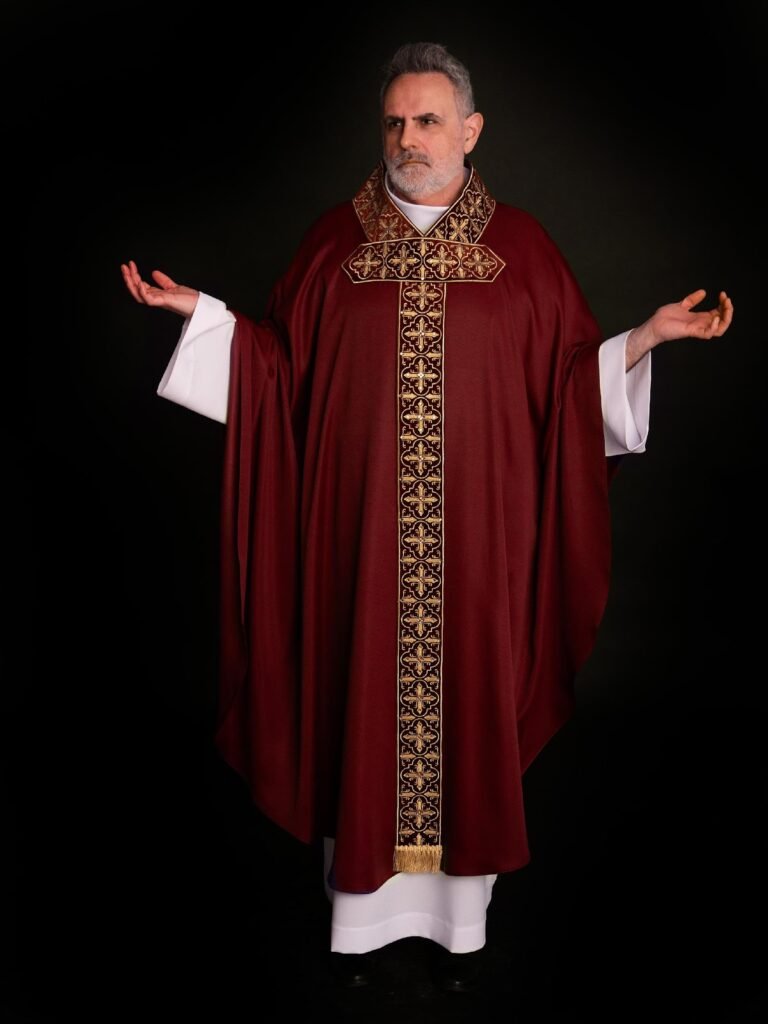Religious symbols have been an integral part of Christian liturgy for centuries, carrying deep spiritual meaning and reinforcing the faith of believers. At HAFTINAUSA, every vestment, altar linen, and liturgical accessory is designed with careful attention to these sacred symbols. These elements are not merely decorative but serve as a testament to the profound traditions of the Church. Understanding the meaning behind these symbols can enhance worship and deepen one’s connection to the divine.
The Cross: The Central Symbol of Faith
The cross stands as the most universally recognized Christian symbol, representing the sacrifice of Christ and the promise of salvation. HAFTINAUSA incorporates various forms of the cross into its vestments and altar linens, from the Latin cross to the Greek cross and the elaborate Celtic cross. Whether embroidered onto chasubles, stoles, or banners, the cross serves as a constant reminder of faith and redemption, uniting clergy and congregants in worship.
The Lamb of God: Symbol of Purity and Sacrifice
A powerful representation of Christ, the Lamb of God (Agnus Dei) symbolizes purity, sacrifice, and divine mercy. Often depicted with a banner or resting on the Book of Seven Seals, this symbol frequently appears on HAFTINAUSA’s altar frontals and Eucharistic linens. It reinforces the significance of Christ’s role as the sacrificial lamb who takes away the sins of the world, making it a meaningful addition to sacred garments and church decor.
The Alpha and Omega: The Eternal Nature of God
The Greek letters Alpha and Omega represent the beginning and the end, signifying God’s eternal existence. These symbols appear in many HAFTINAUSA products, embroidered onto vestments and banners to highlight the omnipotence and timeless nature of God. Often used during Advent and Easter, they remind the faithful of Christ’s role in creation and salvation, emphasizing His presence throughout all time.
The Eucharistic Chalice and Host: The Presence of Christ
The chalice and host are central symbols of the Eucharist, representing the body and blood of Christ. HAFTINAUSA frequently incorporates these images into its liturgical textiles, including altar linens and priestly stoles. These symbols help focus the congregation’s attention on the mystery of the Holy Communion, reinforcing the sacredness of the sacrament and its importance in Christian life.
Marian Symbols: Honoring the Blessed Virgin Mary
Marian symbols, such as the Immaculate Heart, the fleur-de-lis, and the monogram “AM” (Ave Maria), are used in vestments and liturgical banners to honor the Blessed Virgin Mary. HAFTINAUSA offers beautifully embroidered Marian-themed chasubles and altar cloths, perfect for feasts dedicated to the Mother of God. These symbols reflect Mary’s purity, obedience, and role as the Queen of Heaven, making them ideal for devotions and special liturgical celebrations.
The Dove: Symbol of the Holy Spirit
The dove, often depicted descending with outstretched wings, symbolizes the Holy Spirit’s presence and guidance. Frequently used for Pentecost vestments and banners, HAFTINAUSA’s designs incorporate the dove to signify divine inspiration, peace, and renewal. This symbol is particularly meaningful for sacraments such as Confirmation and Baptism, reminding believers of the gifts of the Holy Spirit.
Through its dedication to incorporating these sacred symbols, HAFTINAUSA preserves the rich traditions of the Church while enhancing the beauty of liturgical celebrations. Each design reflects deep theological significance, ensuring that every vestment and accessory serves as a visual representation of faith, devotion, and reverence. By understanding the meaning behind these symbols, clergy and congregations can fully appreciate the spiritual depth of their worship experience.
Sujan Pariyar is an internationally accomplished writer and entrepreneur, with his work featured in various renowned international magazines. Known for his innovative ideas and compelling storytelling, Sujan continues to inspire and engage audiences around the world.
